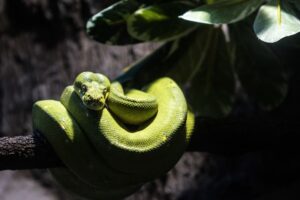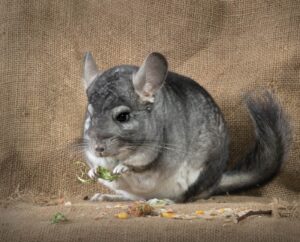Table of Contents
ToggleIntroduction
Nestled within the diverse ecosystems of New Jersey, the state is home to a fascinating and often overlooked species—the flying squirrel. Flying Squirrels New Jersey? Known for their nocturnal habits, gliding abilities, and intricate social structures, these small mammals play a vital role in the delicate balance of the region’s woodlands. As we delve into the world of flying squirrels in New Jersey, we will explore their unique behaviors, reproductive cycles, and the challenges they face in a changing environment. From the mysteries of their nocturnal escapades to the heartwarming tales of maternal care, the story of flying squirrels in New Jersey unveils the intricacies of wildlife survival and adaptation in the face of a dynamic landscape.
Life Cycle And Reproduction Of Flying Squirrels In New Jersey
Mating Season
Flying squirrels in New Jersey typically experience their mating season during late winter to early spring. This period is characterized by increased activity and social interactions among these small, nocturnal mammals. During the mating season, both male and female flying squirrels release pheromones to attract potential mates. Mating rituals often involve elaborate displays, vocalizations, and energetic chases between individuals.
Male flying squirrels actively seek out females, engaging in courtship behaviors to establish bonds. Once a mating pair forms, they engage in copulation, marking the beginning of the reproductive process. The timing of the mating season is often influenced by environmental factors such as temperature and food availability.
Nesting and Birth
After successful mating, female flying squirrels prepare for the upcoming birth by seeking out secure nesting sites. Nesting sites are typically located in tree hollows, bird nests, or leafy dreys constructed in the branches. These nests provide protection and insulation for the newborns.
The female creates a warm and cozy environment by lining the nest with materials such as moss, leaves, and fur. The gestation period for flying squirrels is relatively short, lasting around 40 days. The females give birth to a small litter of blind, hairless, and helpless young, commonly referred to as kits.
Flying squirrels are known for their maternal care, and the mother plays a crucial role in nurturing and protecting the newborns. The young squirrels remain in the nest for several weeks, relying on their mother’s milk for nutrition. The mother diligently cares for her offspring, keeping them warm and safe from potential predators.
Growth and Development of Young Squirrels
As the weeks pass, the young flying squirrels undergo rapid growth and development. Their eyes open, and fur begins to cover their bodies. During this stage, the mother introduces them to solid food, teaching them essential foraging skills. The nest becomes a hub of activity as the young squirrels start exploring their surroundings within the safety of the nest.
After a few months, the juvenile flying squirrels become more independent, venturing out of the nest to explore the tree branches. Gliding practice begins, allowing them to develop their signature aerial abilities. The mother continues to provide guidance and protection, but gradually, the young squirrels become self-sufficient.
Behavior And Adaptations Of Flying Squirrels In New Jersey
Nocturnal Behavior
Flying squirrels in New Jersey exhibit distinctive nocturnal behavior, meaning they are most active during the night. This behavior is an adaptation that helps them avoid daytime predators and take advantage of the cover of darkness for their foraging activities. Nocturnality also allows flying squirrels to exploit food resources that may be less accessible or more abundant during the night. During the daylight hours, these small mammals retreat to their nests in tree hollows or dreys, providing a safe and sheltered environment.
Gliding Abilities
One of the most remarkable adaptations of flying squirrels is their ability to glide through the air. Unlike true flight, where animals actively propel themselves forward, flying squirrels use a specialized membrane called the patagium to glide. The patagium extends from the wrists to the ankles, creating a wing-like structure that allows them to move gracefully between trees. Flying squirrels launch themselves from elevated positions, spreading their limbs to stretch the patagium and form an aerodynamic surface.
Social Structure and Interactions
Flying squirrels typically exhibit a social structure that revolves around family units. They are often found in small groups, and individuals within these groups engage in cooperative behaviors such as communal nesting and group defense against predators. However, flying squirrels are not highly territorial, and multiple individuals may share overlapping home ranges.
Conservation Status Of Flying Squirrels In New Jersey
Threats to Flying Squirrels in New Jersey
Despite their adaptability and resourcefulness, flying squirrels in New Jersey face various threats that impact their populations. Some of the primary threats include:
Habitat Loss: Urbanization and deforestation contribute to the loss of suitable habitats for flying squirrels. As natural areas are converted for human use, the availability of tree hollows, essential for nesting, decreases.
Climate Change: Changes in climate patterns can affect the availability of food resources and impact the timing of seasons. Flying squirrels may face challenges in adapting to shifts in temperature and precipitation, potentially affecting their reproductive success and overall survival.
Predation: Flying squirrels are vulnerable to predation from owls, hawks, snakes, and terrestrial mammals. The fragmentation of their habitats due to human activities can increase the risk of predation as they move between isolated patches of forest.
Conservation Efforts
Efforts to conserve flying squirrels in New Jersey involve a combination of habitat protection, research, and community engagement. Some key conservation initiatives include:
Habitat Preservation: Protecting and preserving natural habitats, especially mature forests with suitable nesting sites, is crucial for the conservation of flying squirrels. Establishing and maintaining wildlife corridors can help connect fragmented habitats, allowing for the movement of individuals between different areas.
Research and Monitoring: Researching the behavior, ecology, and population dynamics of flying squirrels provides valuable information for conservation efforts. Monitoring population trends, habitat quality, and the impact of threats helps guide targeted conservation actions.
Conclusion
In the quiet corners of New Jersey’s forests, the story of flying squirrels unfolds, revealing a delicate dance between adaptation and conservation. As we navigate the challenges of habitat loss, climate shifts, and human impact, the conservation efforts outlined provide a beacon of hope for the future of these remarkable creatures. Preserving their habitats, understanding their behavior, and fostering a sense of community awareness are integral steps toward ensuring the continued existence of flying squirrels in New Jersey.







